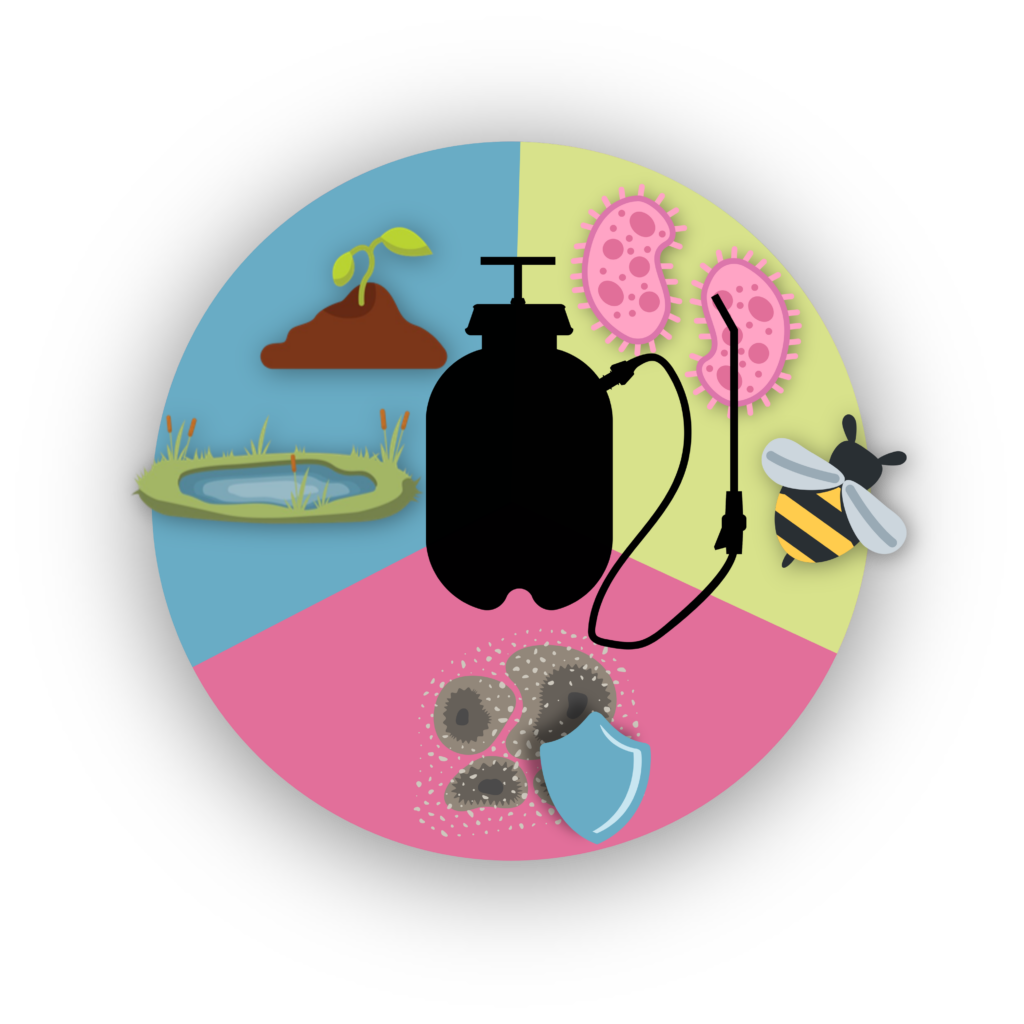Project Idea
Economic and Ecological Problem: Gray Mold
Gray mold, caused by the phytopathogenic fungus Botrytis cinerea, is a global problem in agriculture and leads to billions of euros in crop losses every year [1]. This fungus shows a broad host spectrum and infects grapevines, fruit and vegetables in particular, thriving under humid and temperate conditions [2]. The economic impact is particularly serious in viticulture, where the damage caused by losses in harvest and decreased harvest quality amounts to up to 15 billion euros per year [3]. But even in the cultivation of other berry crops such as strawberries and raspberries, harvest losses due to gray mold can amount to 30-40% [4].
In addition, the increasing development of multi-resistant strains is making it more difficult to combat infections with conventional, sometimes environmentally harmful fungicides, which further increases the need for innovative, environmentally friendly alternatives [5]. This is precisely where our project comes into play, using the targeted application of an antimicrobial peptide (AMP) as an effective biological fungicide.

AMP-based Technology in Application
AMPs are small molecules that occur naturally in plants, animals and microorganisms and effectively fight pathogens by attacking cell walls, membranes or intracellular processes. We plan to engineer bacteria that produce these peptides on demand in the presence of a pathogen. We therefore named our project SPROUT, short for Smart Peptide Release On Unique Triggers.
Next- Generation Farming
We offer a targeted, sustainable alternative. Using a modular sensor approach with a genomic AND-gate, our engineered bacteria detect pathogen-specific signals related to physiology and secretome, releasing AMPs only when needed. This ensures precise action and minimizes off-target effects. The platform’s modularity allows adaptation to various crops and fungal threats.

References
1. Dean, R. et al. The Top 10 fungal pathogens in molecular plant pathology. Mol. Plant Pathol. 13, 414–430 (2012).
2. Williamson, B. et al. Effect of humidity on infection of rose petals by dry-inoculated conidia of Botrytis cinerea. Mycol. Res. 99, 1303–1310 (1995).
3. Final Report Summary – SAFEGRAPE (Biosensor-based instrumentations to be used in vineyards and wineries for fast and sensitive detection of Botrytis cinerea, grey rot, in grapes) | FP7. CORDIS | European Commission https://cordis.europa.eu/project/id/232453/reporting.
4. National IPM Database – 2021 Pest Management Strategic Plan for Strawberry in California: Document Report. https://ipmdata.ipmcenters.org/ipmdata.ipmcenters.org/source_report.cfmview=yes&sourceid=2468.
5. Weber, R. W. S. & Petridis, A. Fungicide Resistance in Botrytis spp. and Regional Strategies for Its Management in Northern European Strawberry Production. BioTech 12, 64 (2023).
